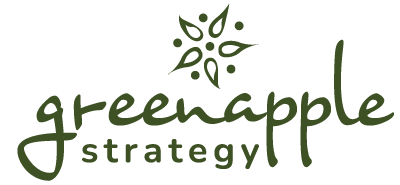Marketing is constantly evolving and changing. Nowhere is that more true than in the world of digital marketing. What worked in the past becomes antiquated just a few years later. Even a tactic that worked last month might not be as effective. That’s why businesses in every industry need to stay informed on the trends and insights to develop an effective digital marketing strategy to reach their target audience.
We recently asked Digital Marketing Strategist, Amanda Bihun, to highlight a few of the most important trends you should know. Amanda and her team do an incredible job of translating the latest digital marketing trends into strategies for clients in a variety of industries.
Trends and Insights to Optimize Your Digital Marketing Strategy
Here are a few of the most important trends and insights you should know in order to optimize your digital marketing strategy.
1. Know that Artificial Intelligence (AI) is changing digital platforms.
Today, AI is used in almost every area of digital marketing. Reaching your audience through digital channels is all about leveraging the algorithms they use. The challenging part is that every digital platform has its own algorithm and every algorithm is constantly changing. For example, Google is in the middle of the biggest change to the analytics platform the company has ever conducted. In order to reach people in today’s digital world, you must be proactive in keeping up with, or even ahead of, these algorithm changes.
2. Effective digital marketing requires a long-term approach.
One of the biggest misconceptions people have about digital marketing is that it will create immediate results. Just like any other form of marketing, digital marketing requires a long-game mindset. It also requires you to test and optimize different strategies. Increasing important metrics such as leads and sales takes time to gain momentum. For example, investing in digital advertising on social media or Google does not guarantee you more leads on day one. It puts your brand in front of new people, but you have to build trust with that new audience over time. Digital marketing requires you to take the entire journey into consideration as you develop your strategy. Ultimately all of your digital marketing efforts work together to build the brand and reach your audience, but none of them will double your profits on day one.
3. Don’t ignore the basic foundation of digital marketing.
A house is only as good as its bones. If you hang curtains or plant pretty flowers out front, it will look good in the short run, but it will not keep your house from falling down if the support beams are cracked. Digital marketing is similar. You need to put in the time to make sure your foundation is solid. The support beams of digital marketing are your website, your social channels, and your email engagement strategy. Investing in these areas will help future-proof your marketing and help you create a strong foundation that works even as things change.
4. Consider your target audience’s perspective in everything you do.
When it comes to creating your digital marketing strategy, it’s important to look at everything you do from the user’s perspective. Oftentimes, businesses can be so close to their products or services that they forget how to view their brand from a potential customer’s point of view. If you want to reach new people, it’s important to create a customer-centric culture, figure out your buyer personas and the questions they have, and how you can help them. It is important to reach potential customers where they are to nurture qualified leads into becoming repeat customers and, eventually, brand enthusiasts.
5. Always be testing and analyzing.
Just because something worked last week does not mean it will work this week. Just because your audience is on Instagram this year does not mean they will still be there next year. Brands must constantly test new strategies and watch the analytics to see where and how their audience is engaging. At Green Apple, we analyzing digital marketing trends for our clients every month. We’ve found that constantly analyzing your efforts is also helpful because it allows you to pivot your marketing efforts without abandoning your entire strategy.
Here’s the bottom line: Long-term planning and short-term course corrections are both essential when it comes to developing an effective digital marketing strategy. If you want to stay ahead of the latest trends, sign up for our monthly e-newsletter. It’s one of the primary ways we keep clients informed on the latest trends they should know.











